- Mammals breathe air with lungs.
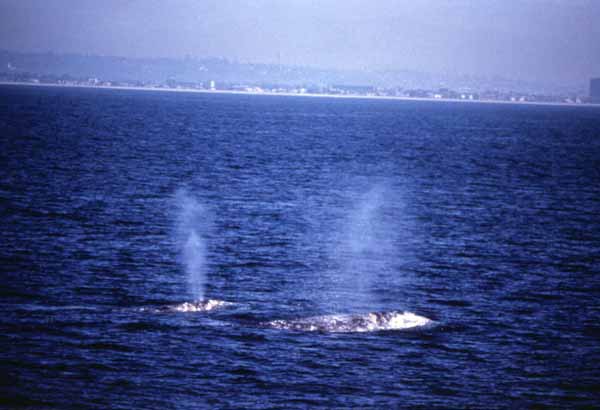
- Mammals are "warm-blooded", they maintain a constant, high body temperature independent of their surroundings.
- As a rule, mammals bear live young. (Two primitive mammals are exceptions to this rule: the duckbilled platypus and the spiny anteater/echidna both lay eggs).
- Mammals nurse their young with milk.

- Mammals have hair, at least at some stage in their development. A whale's smooth skin is an adaptation for swimming. A newborn calf often has a few sparse hairs around the rostrum that are lost within the first days of life.
Order - Cetacea
Cetacea is a scientific order of large aquatic mammals that have forelimbs modified into flippers, a horizontally flattened tail, one or two nostrils at the top of the head for breathing, and no hind limbs. Cetaceans include all whales, dolphins, and porpoises.
The word "cetacean" is derived from the Greek word for whale, kētos.
Biochemical and genetic studies suggest that even-toed ungulates, especially hippopotamuses (Family Hippopotamidae), are cetaceans' closest living terrestrial relatives. (Sheep, cows, pigs, and giraffes are also examples of even-toed ungulates). These animals and whales probably share a common ancestor.
Some scientists suggest that since cetaceans genetically and morphologically fall within the artiodactyl clade, they should be included in the Order Cetartiodactyla.
Living cetaceans are further divided into two suborders: the Odontoceti (toothed whales) and the Mysticeti (baleen whales).
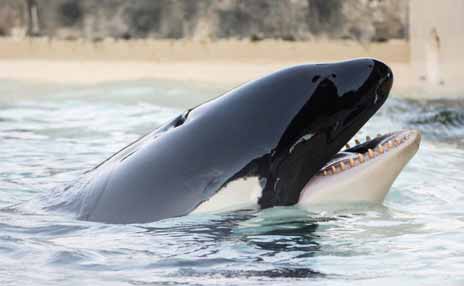

Suborder - Odontoceti
Odontoceti is a scientific suborder of whales characterized by having teeth and a single blowhole. The word "Odontoceti" comes from the Greek word for tooth, odontos.
Family - Delphinidae
Dolphins and their immediate kin are included in the scientific family Delphinidae. This family is represented by about 37 species, including bottlenose dolphins, pilot whales, and false killer whales. The killer whale is the largest member of the dolphin family.
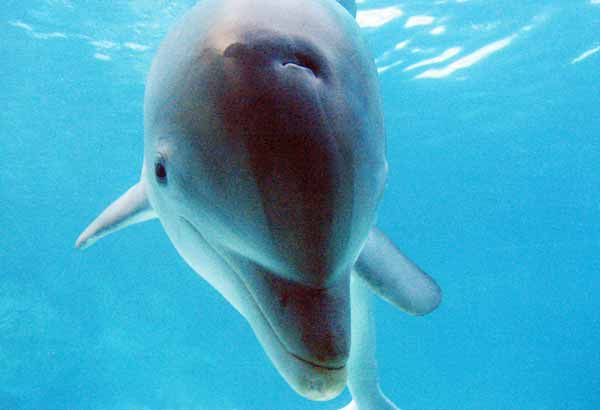
Genus, Species - Orcinus orca
The Latin name Orcinus translates as "belonging to Orcus". Orcus was a Roman god of the netherworld, and this genus name is likely a reference to the hunting prowess of the killer whale. In Latin, orca translates "large-bellied pot or jar," a reference to the shape of the whale’s body.
Although currently only a single species of killer whale is accepted, multiple species or subspecies of killer whales may be recognized in the future. One recent genetic study suggests that the Antarctic type B and type C killer whales form a separate species and transient killer whales are also another killer whale species. (See Ecotype section for more information.)
A biological review team of NOAA (National Oceanic and Atmospheric Administration) Fisheries concluded that the resident, fish-eating killer whales of the North Pacific comprise a distinct (as yet un-named) subspecies.
Common Names
Killer whales gained their common name because some types prey on other whales. They were once called "whale killers" by sailors who witnessed their attacks on larger cetaceans. Over time, the name was gradually switched to "killer whale".
- Another common name for killer whales in Spanish is ballena asesina, which translates to "assassin whale". The German common name is schwertwal, or "sword whale" — a reference to their large dorsal fin. Native Americans call them by names including klasqo'kapix (Makah, Olympic Peninsula), ka-kow-wud (Quillayute, Olympic Peninsula), max'inux (Kwakiutl, northern Vancouver Island), qaqawun (Nootka, western Vancouver Island), and ska-ana (Haida, Queen Charlotte Islands). Other common names include blackfish and orca.
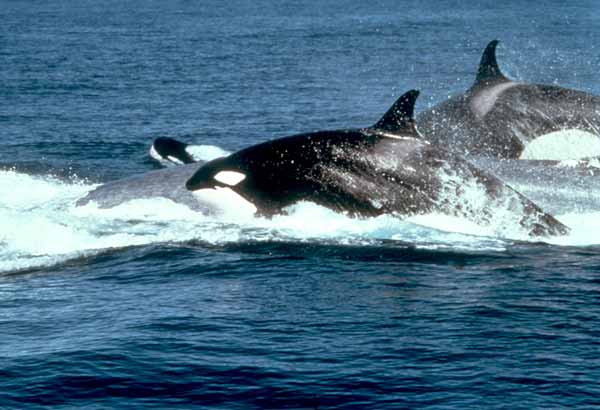
Killer Whale Ecotypes (Forms)
Scientists currently recognize at least 10 distinct killer whale ecotypes throughout the world's oceans. All ecotypes are considered a single species, but many scientists feel that a taxonomic update is needed. These ecotypes have overlapping geographic ranges in certain areas but have slight genetic differences and distinct differences in size, habitat, color pattern, dorsal fin shape, vocalizations, diet and hunting strategies.
In the Northern Hemisphere, there are 5 recognized ecotypes:
- Type 1 and type 2 killer whales inhabit the eastern North Atlantic.
- In the eastern North Pacific Ocean, observers have recognized that various groups of killer whales show physical and behavioral differences. They categorize pods of eastern North Pacific killer whales into three ecotypes: "transient", "resident", and "offshore".
- Researchers analyzed samples collected from 73 whales in the eastern North Pacific and found significant genetic differences among transient whales (also referred to as "Bigg's killer whales" in honor of early killer whale researcher Michael Biggs) and two separate groups of resident whales.
- The offshore ecotype has been identified but not as well studied as the resident and transient ecotypes. It appears to be more closely related to the resident ecotype than to the transient ecotype.
- A fourth potential killer whale ecotype in the Pacific inhabits the Eastern Tropical Pacific (ETP).
There are five recognized ecotypes in the Southern Hemisphere.
- Antarctic type A killer whales.
- Small type B — this ecotype may also be called "Gerlache killer whales" because they are regularly found around the Gerlache Strait off the western Antarctic Peninsula.
- Large type B — this ecotype is sometimes referred to as "pack ice killer whales".
- Type C — also referred to as "Ross Sea killer whales".
- Type D — this ecotype may also be called "Subantarctic killer whales".
Experts identify killer whale populations based on the whales' call patterns, behavior, body shape, and coloration. Current and future studies analyzing biochemical and chromosomal characteristics may help distinguish genetic relationships among pods and regional populations of killer whales.
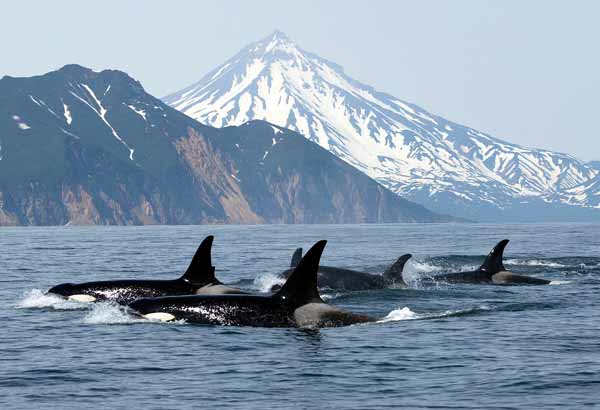
Fossil Record
The earliest fossil whales have been estimated to be about 50 million years old. Scientists theorize that the ancestors of whales were ancient (now extinct) land mammals.
While the fossil record is poor in regard to modern cetaceans, most modern forms of both odontocetes and mysticetes appear in the fossil record five to seven million years ago. Recent mitochondrial and nuclear DNA analyses support the theory that cetaceans are distant cousins of even-toed ungulates (artiodactyls) and that hippopatamids are the closest living relative to cetaceans.
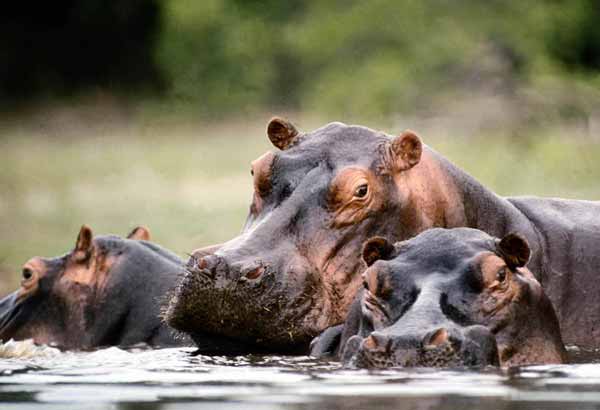
The remains of one such ancient hippopatamid discovered in Kashmir, India — Indohyus — is placed in the extinct family Raoellidae. It's theorized that Indohyus took to the water as a means of escaping predators, as opposed to finding new food sources, some 48 million years ago. The middle ear space of Indohyus features a thick bone covering called an involucrum. Previously, the only other animals known to have an involucrum have been cetaceans.
In Italy, experts have uncovered Pliocene (two to five million years old) fossils that seem to be related to modern killer whales. The fossil skull of a whale that has been named Orcinus citoniensis had smaller teeth — and more of them — than modern killer whales. Scientists have identified large, fossil delphinid teeth, mostly from the Pliocene, as those of an Orcinus species.
